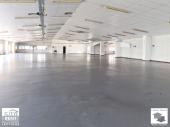|
| Building a property in Bulgaria from scratch |
|
|
 Perhaps you have bought a plot of land in Bulgaria without a dwelling on it or the property requires so much work as to make Bulgarian property renovation impracticable. In this instance a new build property will often be a better solution than messing with an existing building – and sometimes cheaper. If this scenario might apply, try to take the decision early – possibly by inviting a qualified Bulgarian surveyor, or at least some experienced Bulgarian builders, to assess the structure – rather than after a month of hacking out rotten supporting beams!
Perhaps you have bought a plot of land in Bulgaria without a dwelling on it or the property requires so much work as to make Bulgarian property renovation impracticable. In this instance a new build property will often be a better solution than messing with an existing building – and sometimes cheaper. If this scenario might apply, try to take the decision early – possibly by inviting a qualified Bulgarian surveyor, or at least some experienced Bulgarian builders, to assess the structure – rather than after a month of hacking out rotten supporting beams!
A new build should put paid to any structural uncertainties that may have accompanied the old Bulgarian property that you bought, and you will often find that during the course of the building works you increase your dedicated budget anyway as new ideas (and problems) occur. Building a house in Bulgaria from scratch will also confer the flexibility to specify exactly what you want (within certain regulatory guidelines). The process of building from new may take more time, however, and necessitate more expert input. The initial stage of a new build is the design.
The lead expert in this process is normally an architect, but architectural plans will need to be accompanied by a structural engineer’s plans plus further designs prepared by relevant experts detailing the water, sewage, electrical, heating and ventilation systems. Your Bulgarian property agent should be able to advise you about local architects, or failing this a Bulgarian project management company should be able to help. The fees payable to have the plans prepared by a design team vary around the country and have increased considerably in recent years.
Fees in the Veliko Turnovo area in 2007 averaged in the region of 23-35 leva (£8-12) per square metre for the preparation of all the plans, but fees in Sofia and Varna may be as much as double that. It is sometimes difficult to find a design team to prepare plans for small projects such as a simple extension, and you may have to pay a minimum fee that is somewhat larger than you anticipated on the basis of size. Alternatively, you might prefer to have an architect prepare the plans in the UK before submitting them to a local architect for approval.
The architect will prepare detailed plans in accordance with the restrictions outlined in the PUP or visa for building. On completion of all elements of the design (including electrics, water, structural design and so on), an application along with all plans are submitted to the local authority for planning permission. Approval must also be sought from the electricity and water companies (you may also require authorisation from other bodies, such as the fire brigade, depending on the activities you intend to carry out), if everything is approved you will receive a ‘Permission to Build’, which Permits the specified works only and expires after five years. The architect, structural engineer and certain other members of the team are required by law to sign off the works, and at the end of the works the local municipality has to
sign off the project before issuing a ‘Permission for Use’.
Most people build single-dwelling units of perhaps 200 square metres and five metres high, but some investors are building much larger structures. If the structure is over 1,000 square metres, or 10 metres high, then you are required by law to engage the services of a licensed supervision company. Their role is to ensure that the building is being built to the required standards, and their fees vary, averaging around two per cent of the build cost. If you are required to use one of these firms you are advised to still employ a Bulgarian project management company to supervise your building works, because the independent supervision company does not look out for the interests of the investor but simply ensures the works are legal and done to the required standards with the right materials. |
| Monday, Dec 28, 2009 |
|
|
|
|
| » RENTALS |

|
|
|
| Industrial |
€ 4 900 |
|
| Location: |
Lyaskovec |
|
|

|